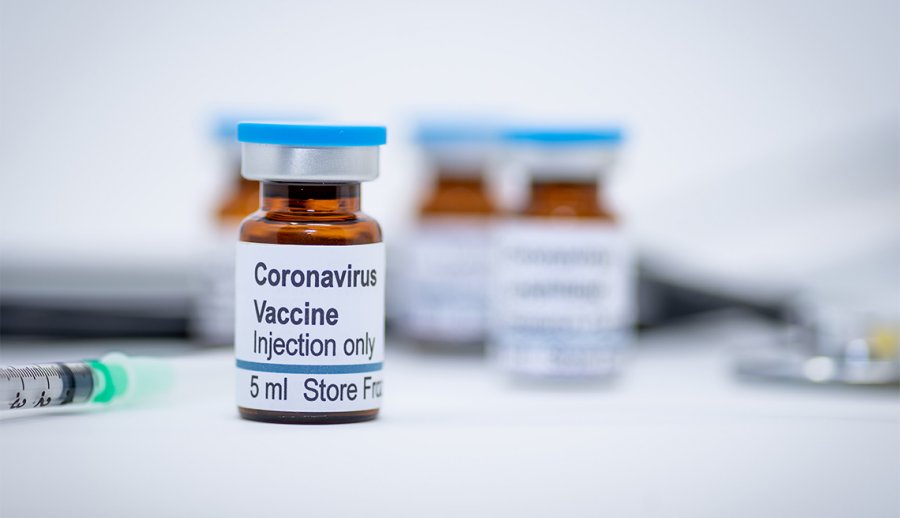Our shot? What shot? This shot
April 28, 2021
After enduring the Covid-19 pandemic for a full year, the long wait for a possible solution has come to an end.
As of right now anyone ages 16 and above are eligible to get an FDA approved Covid-19 vaccination. However, there is not one single vaccine that is given to everyone, there are three approved for different minimum ages.
The Moderna and Johnson & Johnson (Janssen) vaccines are approved for use in people ages 18 and older, and the Pfizer vaccine is approved for people ages 16 and older. Clinical trials including younger children are underway, but nothing for children or pre-teens has been approved by the FDA or CDC.
Although the majority of people are nothing less than grateful for the development and effectiveness of the vaccines, the situation as a whole is not without controversy. The vaccines all have different rates of effectiveness as well as different side effects, and if you’re wondering which shot would be smartest to get there is plenty of information that can help you make that decision.
The least effective of the three vaccines is the Johnson & Johnson at a 72% overall efficacy rate, and it’s the one that has caused the most concern amongst the public.
In early April, the CDC and FDA issued a joint recommendation for states to halt use of the Johnson & Johnson vaccine “out of an abundance of caution” during an investigation into reports of six rare, but serious clotting problems among women ages 18 to 48, occurring six to 13 days after vaccination.
On April 23, the Food and Drug Administration (FDA) ended its recommended pause on the vaccine and will add a warning label about an uncommon, but potentially serious, blood clotting disorder. The dosage is still sitting at a single shot, however back in November, Johnson & Johnson announced it would launch a second clinical trial to study using two doses set at two months apart, to see if that would provide better protection from contraction and/or lower the severity of Covid-19 should an individual contract it. The common side effects are fatigue, fever, headache, injection site pain, or muscle aches, all of which generally resolve within a day or two. It has had noticeably milder side effects than the Pfizer and Moderna vaccines, according to the FDA report released in late February. Obviously that was before the blood clotting incidents reported this past month.
The second of the three vaccines is the Pfizer-BioNTech, referred to as Pfizer. In December of 2020 this became the first COVID-19 vaccine to receive an FDA EUA, after the company reported positive clinical trial data, which included news that the vaccine was up to 95% more effective than a placebo at preventing symptomatic disease. Currently this vaccine is the most effective maintaining a 95% efficacy rate.
Pfizer requires two doses in the form of shots, about three weeks apart. Currently this vaccine is approved for anyone 16 years of age and up. Adolescents aged 12-15 are not yet authorized to receive the vaccine, but Pfizer and BioNTech are planning to submit data to the FDA for an amendment to their EUA for the vaccine. The common side effects are chills, headache, pain, tiredness, and/or redness and swelling at the injection site, all of which generally resolve within a day or two of rest, hydration, and medications like acetaminophen. On rare occasions (as in, 11 cases in 18 million vaccinations), mRNA vaccines have appeared to trigger anaphylaxis, a severe reaction that is treatable with epinephrine (the drug inside of Epipens).
For that reason, the Centers for Disease Control and Prevention (CDC) requires vaccination sites to monitor everyone for 15 minutes after receiving their COVID-19 shot, and for 30 minutes if they have a history of severe allergies or are taking a blood thinner. Pfizer right now is the recommended vaccination by the CDC.
Last of the vaccinations is the Moderna. Moderna’s vaccine was the second one authorized for emergency use in the U.S. it received FDA certification in December of2020, about a week after the Pfizer vaccine was approved. Moderna is also an mRNA vaccine, using the same technology as the Pfizer-BioNTech one and with a similarly high efficacy at preventing symptomatic disease. Moderna currently has a 94.1% efficacy rate, slightly lower than Pfizer but significantly higher than Johnson & Johnson. It is currently approved for adults 18 and older however Moderna is still testing the vaccine in children ages 12-17, and children aged 6 months to 12 years.
There is no timeline for when certification for younger ages will happen for any of the vaccines. Similar to the Pfizer vaccine, side effects can include chills, headache, pain, tiredness, and/or redness and swelling at the injection site, all of which generally should resolve within a day or two. Also similar to Pfizer, Moderna in rare cases can trigger anaphylaxis. Individuals receiving this vaccine are monitored for 15 minutes after doses as well.
If you are unsure about which vaccine you should schedule to receive, there is a lot you can read on the CDC’s website. There you will find in depth information about all three vaccines. As of right now only two are available as the Johnson & Johnson vaccine is still being monitored under a pause period. The highly recommended of the three vaccines is Pfizer, which is to be expected as it is the most effective, but the Moderna is not a wrong choice.



